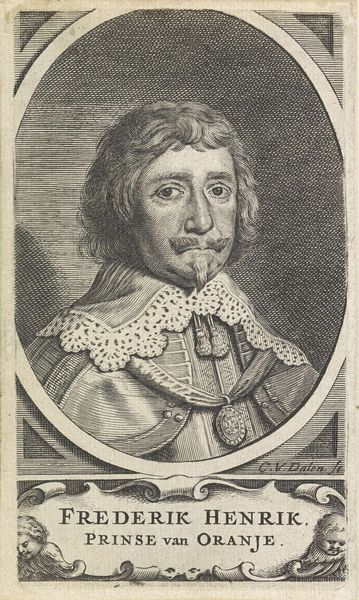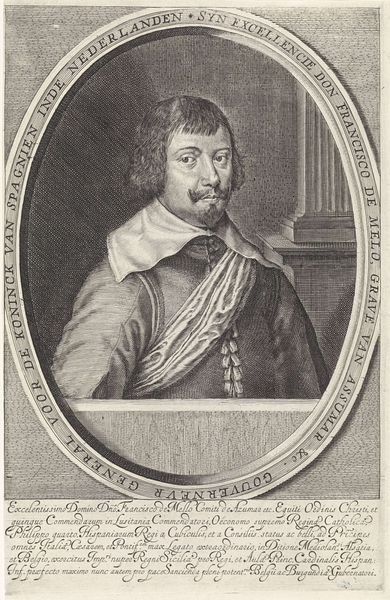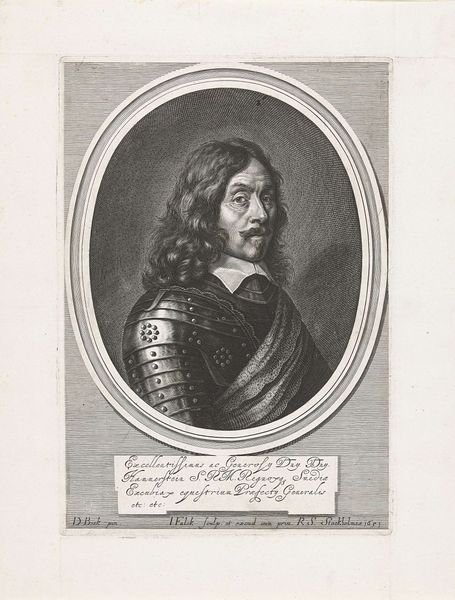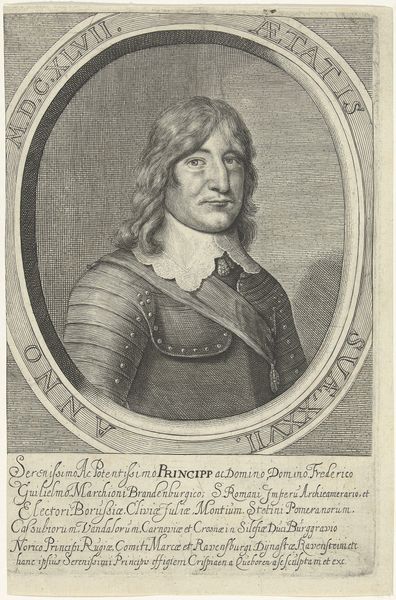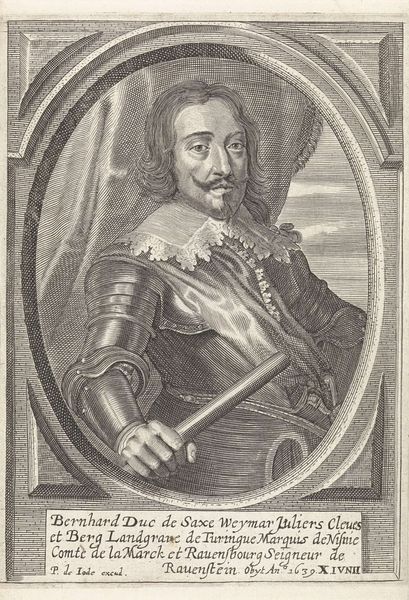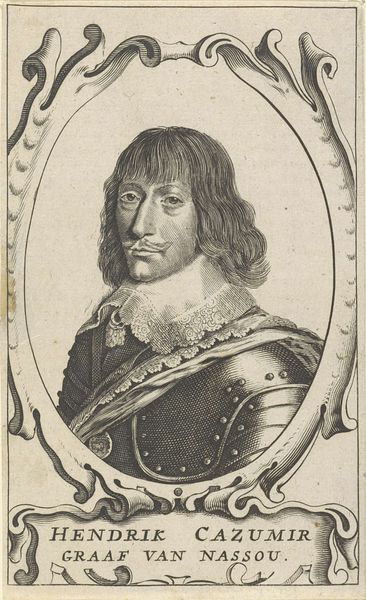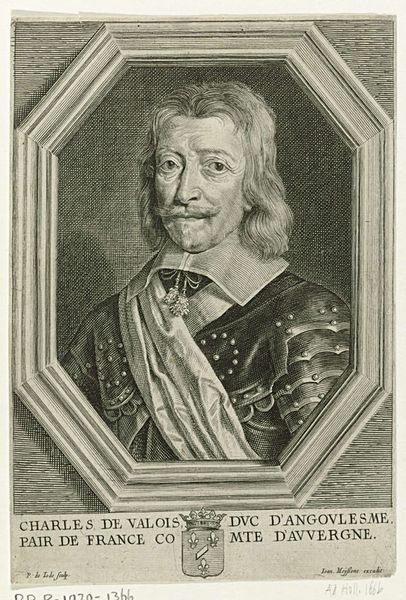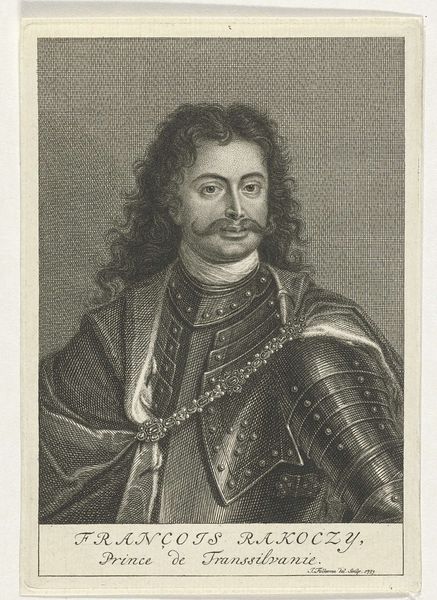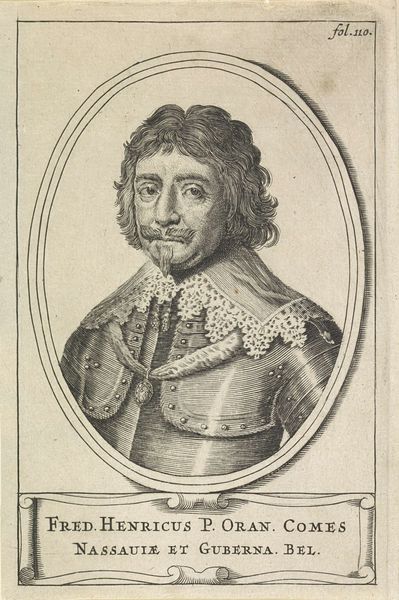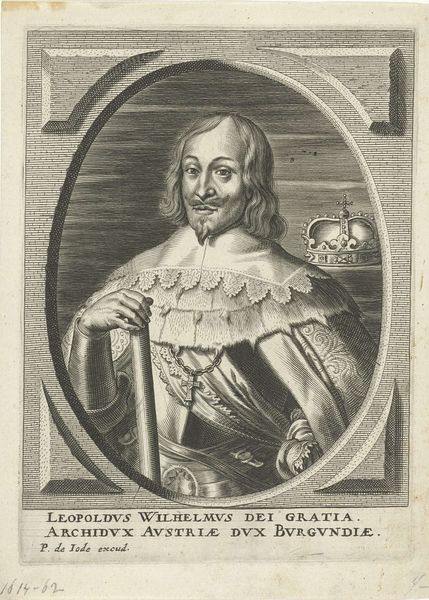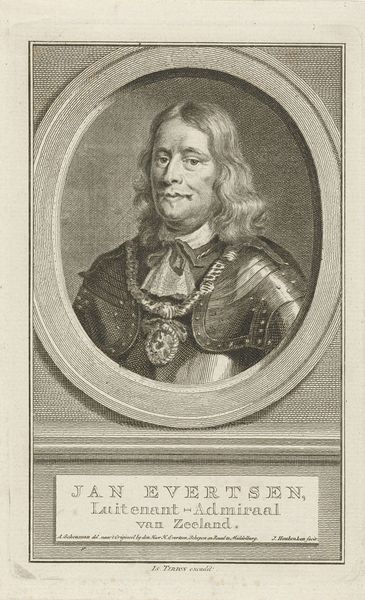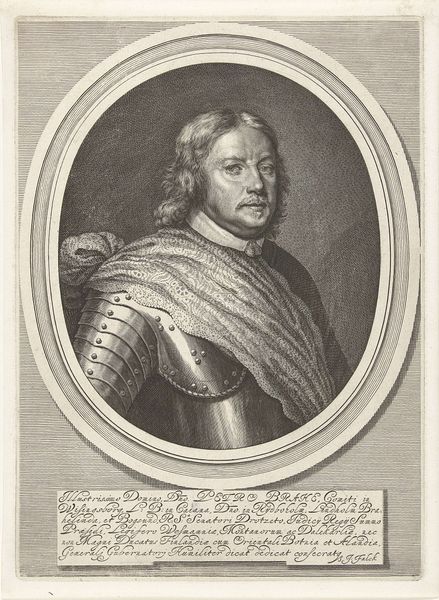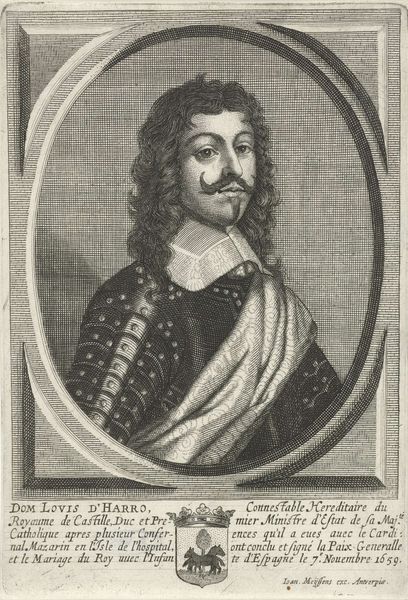
engraving
#
portrait
#
baroque
#
old engraving style
#
historical photography
#
history-painting
#
engraving
Dimensions: height 315 mm, width 219 mm
Copyright: Rijks Museum: Open Domain
Editor: This is a 1649 engraving, "Portret van Lennart Torstenson," by Jeremias Falck. The subject, framed in an oval, wears elaborate armor. It has a certain stoicism to it. How do you interpret this work? Curator: It’s interesting to consider the socio-political context in which this engraving was created. Lennart Torstenson was a significant military figure in the Thirty Years’ War, a conflict deeply rooted in religious and political tensions. Editor: Yes, I did read about that. Curator: And the Baroque style, while visually opulent, often served to project power and authority. Does the portrait’s careful detail and the inclusion of the armor speak to the anxieties and power dynamics of the time? To the relationship between military prowess and nobility? Consider how representations of military leaders contribute to constructing historical narratives. Who is valorized? Who is erased? What power relations are being represented? Editor: I hadn't thought about it that way before. It is less about just portraying someone's likeness and more about making a statement about them. The inclusion of armor would certainly play into constructing that kind of a powerful persona, not necessarily representative of who they were as a person. Curator: Exactly! By examining portraits like this, we gain insight into the intricate connections between art, power, and the construction of historical memory, enabling critical conversations about representation, agency, and the often-unacknowledged biases within historical narratives. Editor: Thanks! It's fascinating to think of art as actively shaping how we understand history.
Comments
No comments
Be the first to comment and join the conversation on the ultimate creative platform.

